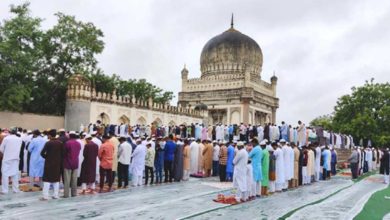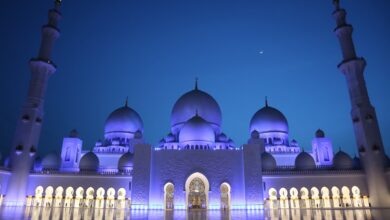These Nizam descendants get paid Rs 4 to Rs 150 a month
Imagine having the world’s richest man in your family tree, but all you get is the bitter fruit of penury. Mir Osman Ali Khan, the seventh Nizam of Hyderabad, was rumoured to have used a 185-carat diamond — the Jacob’s Diamond — as a paperweight. In 1937, he was on the cover of the Time magazine for being the world’s richest man with an estimated wealth of billions of dollars.
Today, however, one branch of the Nizam’s family — the descendants of the first to the sixth Nizam — have none of the airs of a rich heir. They live in Hyderabad doing odd jobs and running small businesses. The famed wealth of the Nizam seems to them like an old, faded photograph where they can barely make out the smudged contours of a glorious past.
Per the last count, there are about 4,500 Sahebzadas, as they are called, brought together under one roof — the Majlis-e-Sahebzadagan Society. They have small, faded ID cards endorsing their membership to this nearly bankrupt trust which pays them a cash dole of anywhere between Rs 150 and Rs 4 every month.
The society members recently met in the Old City of Hyderabad, had some biryani carrying the rich fragrance of saffron, and appointed one of the descendants of the family, Mir Raunaq Yar Khan, as their Nizam. The only sign of old grandeur under the shamiana that day was the long line of the dark maroon Rumi Topi, or cap, that many of them had put on, just like Mir Osman Ali Khan did.
In the Hyderabad of old, the cap signalled aristocracy. Today, however, many of the Sahebzadas struggle to hide their hard life despite their lineage.
Meet Mir Sajid Ali Khan, dressed in a simple shirt and pants, and hiding his left hand in his trouser pocket as it has been paralysed. For the most part, he had made a living as a car mechanic, but about 15 years ago, a car crashed on him while he was repairing it, leaving one side of his body paralysed. The 40-year-oldhas three children and feeds his family by doing odd jobs. “I get Rs 18 every month from the trust as a ‘salary’,” he says. “How can one live on that money?”
Mir Sayeed-ud-Din Khan, in his mid-60s, has a son working in ‘Saudia’. As a result, he doesn’t need to work for a living. Also, he doesn’t need to come to the trust and pick up his Rs 133-per-month allowance. “You can’t get two decent lukhmis for breakfast with that money,” he says. You expect him to laugh, but he doesn’t, preferring to give a stiff, expressionless look. For those not initiated into Hyderabadi cuisine, lukhmi is a variation of the samosa, a flat square filled with mincemeat.
And then there is Fatima Barkat-un-Nisa, who once worked as a schoolteacher but stopped because of health issues. “To come to the Old City just to get my monthly allowance of Rs 20. 25 is no longer feasible,” she says. “I can’t afford the Rs 500 one-way taxi ride to come to the office. Although, we visit the office once a year just to establish that we are alive. ”
She says there are Sahebzadas who make a living as auto drivers or as a domestic help in other people’s homes, but they would prefer not to be identified. “There are many members who need the small amounts the trust gives out,” she says. “That is how desperate they are. ”
There is talk among the descendants of Mir Osman Ali Khan leaving crores in two trusts – the amount ranges from about Rs 2 crore to Rs 9 crore, which would have been a princely sum in the 1950s. Today, they are left with empty coffers. The members are hoping they will be identified as legal heirs of the last Nizam and regain some of the lost glory, even if it is reflected glory.








